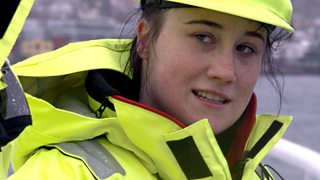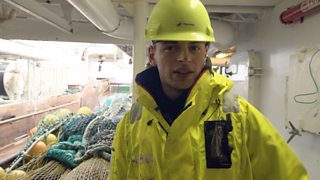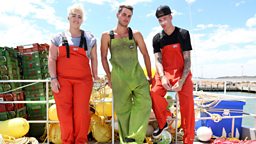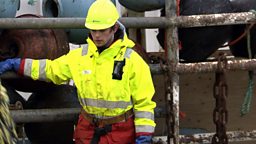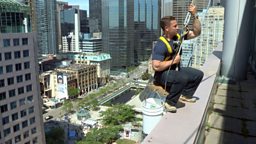Trawler fishing in Norway
If you think you’re tough enough to try trawler fishing in Norway, here’s what you need to know…
About the job
All work in the Norwegian fish industry is hard and physically demanding. The most common fish you would work with is salmon, trout, herring, mackerel and other types of white fish such as cod. There are many different types of assignments in a fish production factory, such as filleting, slaughtering and warehouse work. Those interested in working in fish production must be prepared to carry out a wide range of work assignments.
The ship featured in the programme catches white fish and can sail as far as Russia and Canada in search of good stock. They can carry 450 tonnes of fish before they have to come in to port and unload. There is a processing plant in the bowels of the ship where most of the work is done – much of the day is spent here killing, gutting and freezing the fish. It normally sails with a crew of 17, but as it operates 24 hours per day, there are two crews of eight who work six hours on and six hours off continuously for five weeks, and one cook who caters for everyone.
The contributors on the show earned £3000 gross for three weeks work.
The fishing industry is the second largest export sector in Norway after oil and gas. Farmed seafood is now a much bigger industry that traditional wild fishing. There are some permanent jobs on offer in fish factories, but it is not always easy to get a job at sea unless you speak a Scandinavian language or have former experience. For jobs on fishing vessels you will need a special security certificate in order to work at sea – the main provider of this course is in Tromsø. Peak seasons can vary between types of fish and area worked, though in the north it tends to be between April and July.
For information about working in Norway, where you can also upload CVs and apply for jobs, please visit the official website for (NAV).
Jamie and Jessica
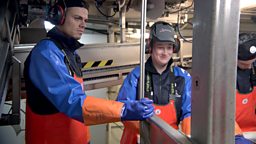
Getting in touch
Our workers joined a trawler ship called Hermes which was based out of Tromsø in northern Norway. For more information about the company, please visit the website.
You can send an email directly to the company on the section of this website.
Alternatively they can be contacted via telephone on +47 776 15510.
Getting there
Costs
- Flights (both ways) are roughly £200- £250. There are no direct flights to Tromso most flights go via Oslo. It may be cheaper to get one-way flights for Oslo for less than £100 if booked far enough in advance, and you’ll need the same amount for your return flight.
- Travel Insurance: £100 (approximate amount based on four months in Norway - amount will vary depending on provider, level of cover, and length of stay. You must make sure that it covers the sort of work you may be doing).
- Additional living expenses. You will need enough money to support yourself before getting a job. If you do work on a ship, it is likely that food and accommodation will be provided for on board.
Visa
- Visas are not required for EU citizens. For more information on immigration requirements, visit: www.udi.no
- If you plan on staying for longer than three months, however, you will need to .
- You may also need a .
Health Insurance
- You should obtain a (EHIC) to help cover any health costs whilst in Norway. You should still buy travel insurance even when you travel with an EHIC.
- You will need to obtain an , specifically saying you are fit to work at sea.
Passport
- You will need a valid passport for the length of your stay, and it should be valid for three months beyond your intended return date.
Meet the workers
This information was correct at time of writing on 24/07/14 but you should check with relevant authorities and companies as costs and requirements can change at any time.
Remember local taxes may apply and that your earnings may affect your UK tax position and any benefits you may be entitled to.
